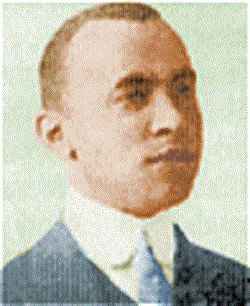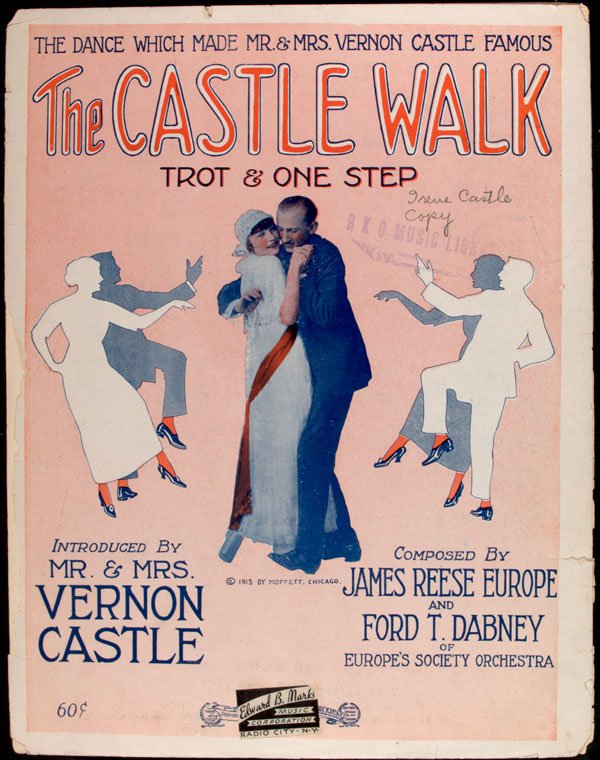
The Castle Walk
James Reese Europe & Ford T. Dabney
Composer Profiles
James Reese Europe
(1881-1919)
"He was our benefactor and inspiration. Even more, he was the Martin Luther King of music."
—Eubie Blake
Founder of the Clef Club, a union of more than 200 black musicians, Europe was known as a black-run, black-owned activist of his time. The Clef Club Symphony Orchestra put on “A Concert of Negro Music” at Carnegie Hall in 1912 that was a huge success. Europe believed that while white music was highly respected, black people had their own music to play that everyone would want to hear. At the height of his career in 1919, Europe was tragically killed by a member of his band right before a show in Boston. In his short 38 years of life, Europe truly had a tremendous impact on American band music as we know it today.
Ford T. Dabney
(1883-1958)
"Mr. Ford Dabney, pianist, is due in Washington for a few days much to the great delight of his musical friends. He has a very brilliant future."
—November, 1901
Ragtime pianist, Ford Dabney, become a star at the age of 18, regarded as a “young colored genius.” He pursued a career in New York as a composer and performer in 1908, and he become an integral member of James Europe’s famous Clef Club in 1910. Dabney took over responsibilities for the Tempo Club when Europe stepped down, and he introduced many great tunes of the late 1910s as one of the first recorded black pianists. By the time he retired, he was served as a historian of black musicians such as James Reese Europe and W.C. Handy.
About the Piece
The Castle Walk (1914)
The Castle Walk was part of a set of eight pieces co-composed by Europe and Dabney specifically for the famed husband and wife dance team of Vernon and Irene Castle. The Castles found Europe's Society Orchestra among the best they had worked with, and hired Europe as their band leader and Dabney as their arranger. One of these pieces, the Castle Half and Half, was written in 3/4 + 2/4, or actually 5/4 time, over four decades before that time signature would become popular through the efforts of Dave Brubeck and Paul Desmond. All of these were issued within a two month period in 1914, an extraordinary output for the quality of work the two invested into the project. Europe invented the turkey-trot with the Castles, and the fox-trot, which is still popular today.
- Excerpts from the Dabney & Europe bios linked aboveMelody + Bass Line
The main melody of this piece is right at the beginning, like most marches (this example starts in measure 9). I wrote out the bass line that is in the tuba/low voices as a bass line or potential counter-melody that I think would be fun to also teach by ear. But if you are just starting out on your Musicianship Journey, maybe it’ll be easier to teach chord roots as a simplified bass line. I wrote that below!
Tonal Patterns
Once you figure out the chord structure, make up some tonal patterns that match!
**Note: you absolutely do not have to go to the effort of writing all this stuff out. I just wrote everything out so you can see what I would do. You’re teaching by ear, so write out however much or little as you want!
Rhythm Patterns
I took rhythms from the entire piece, not just the section I wrote out the melody for. I also grabbed some rhythms from the supporting voices that aren’t melody or bass line. Decide what rhythms you want everyone to learn and roll with it!
Improvisation
Remember the Seven Skills and start out with restrictions! Once they are comfortable with what notes are options for all the chords (tonal patterns), have them improvise rhythms on just the bass line or just the voice leading. Then have them improvise tonal patterns on the beat (skill 5) and continue to add rhythms and passing tones until they are freely improvising!









